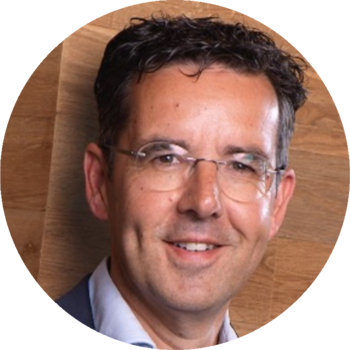8 July 2025
As Leather Working Group celebrates 20 years of operations, we’re shining a light on some of the most formative moments in our history. Here Egbert Dikkers of Tannery of the Future describes in his own words how the Dutch not-for-profit organisation teamed up with LWG to develop a checklist to increase transparency within the leather industry.

“I was part of an initiative from MVO Nederland (CSR Netherlands), an organisation that supports companies on their sustainability journeys, and what we quickly realised was that many Dutch brands working with leather had no idea where their leather came from. They didn’t know whether it was sustainably sourced, or, even what “sustainable leather” meant.
“That’s what initiated the creation of the Tannery of the Future project. MVO Nederland brought together people from across the leather value chain, brands, suppliers, NGOs and industry experts, with a shared goal to help Dutch leather brands source more responsibly.
“Some had already heard of Leather Working Group (LWG), but most hadn’t. Many were working with small tanneries, and at that time, LWG certification was mostly viewed as something for larger players. That’s why we knew we had to start with something simple, something accessible. Together with NGOs like Solidaridad, we developed a basic checklist – a tool to kick-start conversations between brands and tanneries. It wasn’t meant to be complex; it was designed as a practical guide, with straightforward yes/no/don’t know questions, along with useful links to help people understand what’s involved in producing and sourcing leather responsibly.
“The project ran for several years under MVO Nederland, and eventually we reached a crossroads: we had this helpful document, but we didn’t want it to just sit on a shelf somewhere. Thanks to the generous support of Smit & Zoon, we were able to take the next step – transforming the project into a not-for-profit foundation. Later, we also received backing from TEGEWA, the German association for leather chemical suppliers, which helped us broaden our reach. We began printing hard copies of the checklist and organising workshops across different countries to spread the word.
At this stage, Leather Working Group still wasn’t involved, but we were aware that they were starting to think more about how to engage with smaller tanneries. This was crucial because many of these tanneries didn’t even have basic performance data, and without that, they couldn’t begin improving. Collecting data is really where it all starts.
“That’s when Leather Working Group saw potential in what we had created. They realised the Tannery of the Future checklist could serve as a stepping stone to LWG certification, a first step on the path toward more formal auditing. For us, this was exactly what we had hoped for from the beginning. We knew that if we really wanted to make a lasting impact, we needed to embed our work into a larger, more established framework.
“Solidaridad remained an important partner throughout, offering critical expertise and support. Reaching smaller tanneries was always a priority for us. After all, if these tanneries couldn’t access tools to improve, and ultimately achieve at least LWG bronze-level certification, they would be left behind and still being part of the supply chain. Creating them a clear pathway toward improvement was vital.
“When we launched Tannery of the Future, we said from day one that our ultimate goal was to merge or collaborate with Leather Working Group. To have reached that point now, seeing our work embraced by an organisation with deep industry expertise, strong auditing processes and connections to NGOs worldwide, feels incredibly rewarding.
“Looking back, I’m proud of what we accomplished. What started as a small Dutch initiative has now become part of a much larger global effort to reduce the environmental impact of leather and make the industry transparent. For us, this collaboration with Leather Working Group wasn’t just a milestone, it was the dream we had from the very beginning.”
